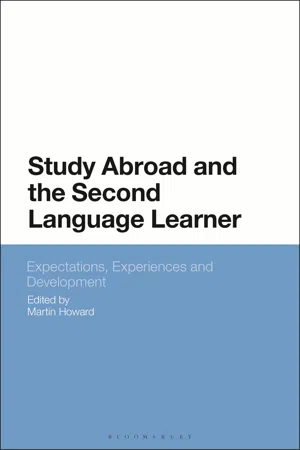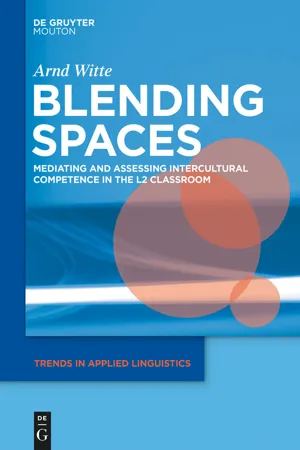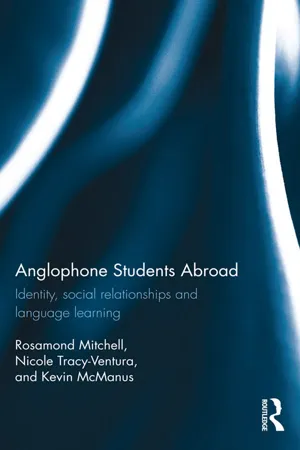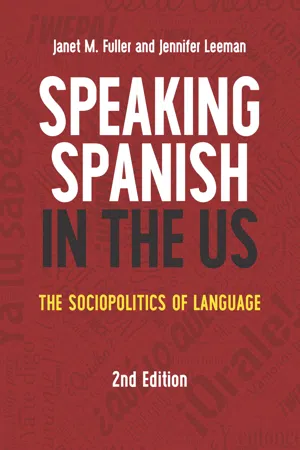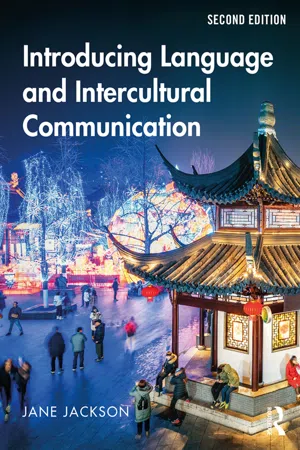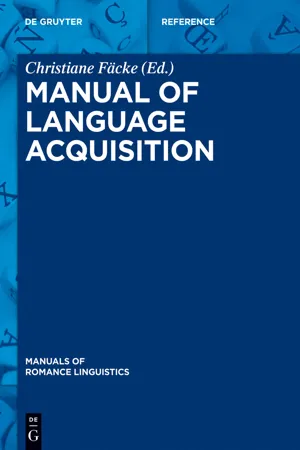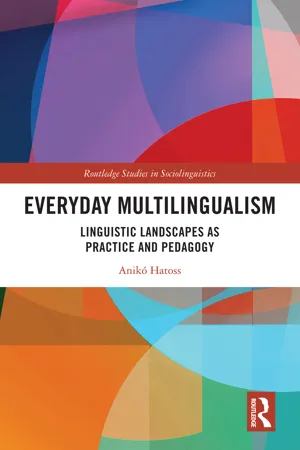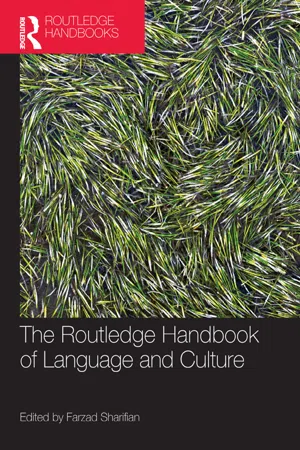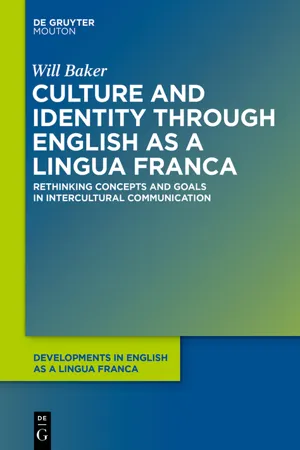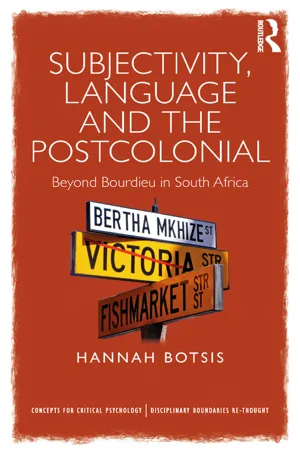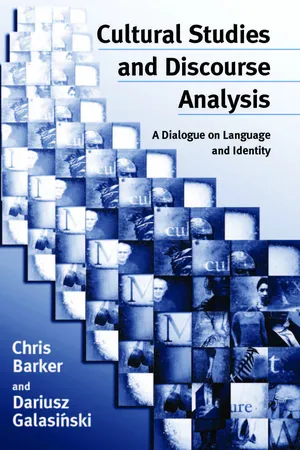Languages & Linguistics
Language and Identity
Language and identity explores the relationship between language and an individual's sense of self and belonging within a particular community or culture. It encompasses how language use and proficiency can shape and reflect one's cultural, social, and personal identity, as well as the ways in which language can be a tool for expressing and asserting one's identity.
Written by Perlego with AI-assistance
Related key terms
Related key terms
1 of 4
Related key terms
1 of 3
12 Key excerpts on "Language and Identity"
- eBook - ePub
Study Abroad and the Second Language Learner
Expectations, Experiences and Development
- Martin Howard, Martin Howard(Authors)
- 2020(Publication Date)
- Bloomsbury Academic(Publisher)
Identity work has been a focus of researchers of SLA for some time, at least since Norton’s call for ‘a comprehensive theory of identity that integrates the language learner and the language learning context’ (Norton, 1995, p. 12), reflecting similar attention in other fields, including psychology, anthropology, sociology and sociolinguistics. At the same time, the move, on the part of many social scientists, including applied linguists, towards a post-structuralist approach to identity has resulted in a shift whereby identity is no longer seen as something solid and permanent but rather as ‘socially constructed, self-conscious, ongoing narratives that individuals perform, interpret and project in dress, bodily movements, actions and language’ (Block, 2007, p. 27). In other words, identities are sensitive to context and are constructed in interaction. From this perspective, it is clear that language and communication play a crucial role in identity work.The first decade of this century saw the publication of a number of studies that focused on different aspects of identity that impact SLA, including race, gender, social class, nationality, ethnicity and language (Benson and Nunan, 2004; Norton, 2000; Omoniyi, 2004; Pavlenko and Blackledge, 2004; Pavlenko et al., 2001). Language identity is, of course, intrinsically intertwined with other aspects of identity. Thus, for example, in Polanyi’s (1995), Twombly’s (1995) and Talburt and Stewart’s (1999) studies, gender identity is central to women participants’ subject positioning through an L2. However, the focus of this review is studies in which language identity is salient for the individual.Within the field of study abroad, the notion of ‘identity’ occupies a central position in three recent works: Jackson (2008), Benson et al. (2013) and Mitchell, Tracy-Ventura and McManus (2017). The three studies focus on the relationship between language learning and identity from a ‘social-constructivist’ or ‘poststructuralist’ perspective, according to which identities are ‘socially conditioned and constrained’ (Benson et al., 2013, p. 18) but also ‘co-constructed, negotiated and transformed on an ongoing basis by means of language’ (Jackson, 2008, p. 35). Despite their important contribution to the SA field, these three works can also be considered as representative of a general tendency in identity research described by Block (2009, p. 223): ‘While most researchers adopt versions of Bourdieu’s theory of practice and/or Giddens’ structuration theory, they then proceed to present narratives of their informants, which position them as active shapers of their realities while leaving behind more explicit mention of how social constraints are at work at every juncture of their activity.’ - eBook - ePub
- Arnd Witte(Author)
- 2014(Publication Date)
- De Gruyter Mouton(Publisher)
Every individual has a sense of identity which serves as a nucleus for (inter-) action. Without notions of identity there would be no need for human interaction. However, identity is not a stable feature of the individual. It is not given (with the exception of an identity assigned by others), but is discursively constructed through interaction with others by using symbolic sign systems such as language. Notions of identity are only possible to develop and sustain in dialogue with others. Thus, identity is constantly under construction by the subject and relevant others; it is facilitated in the intersubjective space and temporarily adopted by the subject for certain purposes. Identity is afforded by particular resources and relationships, activated in particular contexts, and enacted in certain ways. Identity is not an internal state of the individual, but a discursive construct, characterized by dynamism and openness. The identity of the individual is interwoven with collective identities. It can only be stabilized in a cultural network of schemata of conceptualizations, emotions, attitudes, beliefs, behaviors, and Discourses which are constituted by linguistic and sociocultural categories. This fact underlines the close interrelation between language and constructs of identity in many dimensions, for instance, (1) language provides the subject with the semiotic tools for constructing a personal identity; (2) language facilitates the co-construction of a collective group identity; (3) language allows people to interact and test their constructs of identity; (4) language fosters modification of personal and social identities through interaction; (5) language (e.g., in the form of Discourses and genres) allows ways of performing and recognizing characteristic identities; (6) language use involves situated identities (in D/discourses, narratives, and genres); (7) language allows for a meta-perspective on one’s identity by integrating the reaction of others into the subjective constructs and performances of identity; (8) language, if it is at the core of personal and social constructs of identity, is also the nucleus for changing these constructs; (9) language provides elements for the construal of subjective and collective identities with the sites of resistance, discrimination, empowerment, and solidarity.Subject positions are offered, contested, rejected, and accepted in discursive interaction with others. Learning a L2 and its sociocultural context therefore has the potential to affect constructs of identity in many aspects: (1) the engagement with the other language and its cultural conceptualizations makes L1-mediated constructs of subjective identity more explicit; (2) the encounter with different constructs of “reality” can have an expanding effect on constructs of identity; (3) the engagement with different Discourses, genres, and narratives present alternative ways of constructing subjective identity; (4) the (at least momentary) - eBook - ePub
Anglophone Students Abroad
Identity, Social Relationships, and Language Learning
- Rosamond Mitchell, Nicole Tracy-Ventura, Kevin McManus(Authors)
- 2017(Publication Date)
- Routledge(Publisher)
Kramsch (2009) has described the language learner as (potentially) a multilingual subject, defined by possession of what she calls “symbolic competence”. This consists in an understanding of the symbolic value of language, and the “different cultural memories evoked by different symbolic systems”, as well as the capacity to use these different systems “to reframe ways of seeing familiar events, create alternative realities, and find an appropriate subject position between languages” (p. 201).Discussions of identity in the applied linguistics and SLA literature have increasingly adopted similarly dynamic and subjective perspectives (Block, 2007; Dervin, 2013; Norton, 2000, 2014), influenced by broader arguments in social science by theorists such as Chris Weedon and Judith Butler. Briefly, from this point of view, identity is seen as “multiple, changing and a site of struggle” (Norton, 2014, p. 61).Block provides an extended definition, relating the individual “performance” of identity to the wider social context. For him, identities comprise:Socially constructed, self-conscious, ongoing narratives that individuals perform, interpret and project in dress, bodily movements, actions and language. Identity work occurs in the company of others – either face-to-face or in an electronically mediated mode – with whom to varying degrees individuals share beliefs, motives, values and practices. Identities are about negotiating new subject positions at the crossroads of the past, present and future. Individuals are shaped by their sociohistories but they also shape their sociohistories as life goes on. The entire process is conflictive as opposed to harmonious and individuals often feel ambivalent. There are unequal power relations to deal with, around the different capitals – economic, cultural and social – that both facilitate and constrain interactions with others in the different communities of practice with which individuals engage in their lifetimes. Finally, identities are related to different traditionally demographic categories such as ethnicity, race, nationality, migration, gender, social class and language - eBook - ePub
Speaking Spanish in the US
The Sociopolitics of Language
- Janet M. Fuller, Jennifer Leeman(Authors)
- 2020(Publication Date)
- Multilingual Matters(Publisher)
6 Language and IdentityObjectivesIntroductionTo present a framework for analyzing the social construction and performance of identities in linguistic interaction, and to examine research on how Spanish-speakers in the US use language in the construction, performance and negotiation of identity.In this chapter, we will build on the discussion of race as socially constructed, as well as on the discussion of language ideologies and ideological processes, by looking at how many different types of identity – such as gender, social class, being a social activist or being someone’s best friend – are constructed through language. We address how this theoretical framework can be applied to language use in general, and to speaking Spanish in the US in particular. As we will show, the ways in which we use language to construct and perform our identities are not limited to choices about speaking Spanish or English. People use many different linguistic features (including specific styles, words and pronunciations) to signal who they are or to position themselves in particular ways. We also discuss how identity is intertwined with the topics of other chapters in this book, because we are constantly constructing our identities through everything we do.IdentitiesThe word identity is used in many different ways in contemporary discourse; it is often used to talk about the seemingly objective, demographic-based essence of a person. The term is also used to talk about someone’s official records and accounts, as in the phrase identity theft . Such usages imply that identity is static in nature, a set of characteristics, categories or even numbers. In this book we think about identity differently, in line with current understandings in the social sciences and humanities. In particular, identity is not a fixed category or unitary sense of self; instead, individuals’ identities are socially constructed, and they are also fluid, varied and multiple. For one thing, just as ethnoracial - Jane Jackson(Author)
- 2019(Publication Date)
- Routledge(Publisher)
Chapter 5 Language and Identity in intercultural communication‘Where are you from?’ ‘What is your nationality’? ‘You have an accent.’ ‘But, I never think of you as…’ ‘I didn’t know you were…’(James 2001: 1)The nature of identity is highly subjective … the fixed categories that have sufficed to describe features of identity in the past are hardly adequate to explain the processes that individuals experience during intercultural encounters of all kinds.(Temples 2015: 573) Identity is not something one has, but something that develops during one’s whole life.(Beijaard et al. 2004: 107)learning objectives
By the end of this chapter, you should be able to:- 1 Define identity
- 2 Identify and discuss multiple characteristics of identity
- 3 Explain how identities are shaped and formed
- 4 Identify, define, and provide examples of different types of identity
- 5 Describe ways in which people communicate their identities to others
- 6 Explain how individuals negotiate their identities in intercultural interactions
- 7 Explain how and why identities may be contested or challenged
- 8 Describe the relationship between language, culture, and identity
Introduction
Identity is a principal area of concern in the study of language and intercultural communication. Our sense of self and positioning in the world affects the quality of our life and interpersonal ties, including intercultural unions (e.g., friendships, romance, work relationships). The language we use and our cultural socialization influence how we see ourselves and communicate with people who have different backgrounds (e.g., linguistic, cultural, religious).After defining what is meant by identity, this chapter explores how the socialization process plays a role in identity development and reconstruction. We then turn our attention to other characteristics and facets of identities that can influence intercultural relations. Next, we explore some of the major types of identities (e.g., personal, social, cultural, racial, ethnic, language, multicultural/ multilingual, gendered, sexual, age, religious, physical ability, national, regional, global, organizational, virtual) that can affect our language use and intercultural communication. Throughout, attention is drawn to the complex connection between language, culture, and identities.- eBook - ePub
- Christiane Fäcke, Christiane Fäcke(Authors)
- 2014(Publication Date)
- De Gruyter(Publisher)
Although identity is often used as a fuzzy category (especially in everyday language), it is of key importance for the understanding of language learning processes. As identity is above all constructed through language – in fact in the context of personal as well as of collective identity formation – it also plays an important role for the understanding of language learning and language acquisition processes. The acquisition of a second or a third language, the conscious preservation (or non-preservation) of the language of origin in the case of migration, but also the refusal to learn certain languages, not least in the school context – all these phenomena are easier to understand in the light of identity formation processes.For research into language learning, biographical approaches have proved particularly rewarding. Pedagogically and didactically interesting methodologies are now available for use in schools, too. As the example of Luxembourg shows, identity and language play an important role, not only for the individual, but in particular also for the national self-conception. Especially in the context of educational policies the question of identity construction is of utmost topicality: language education policies and language education hold the responsibility for this highly important task, and particularly, in relation to instruction and teaching methods.7 Bibliography
Actioun Lëtzebuergesch – Eis Sprooch, http://www.actioun-letzebuergesch.lu/ (21.5.2013).Assmann, Aleida (1994), Zum Problem der Identität aus kulturwissenschaftlicher Sicht, in: Rolf Lindner (ed.), Die Wiederkehr des Regionalen, Frankfurt am Main, Campus, 13–35.Auernheimer, Georg (1995), Einführung in die interkulturelle Erziehung, 2., überarbeitete und ergänzte Auflage, Darmstadt, Wissenschaftliche Buchgesellschaft.Bakhtin, Mikhail (1981), The dialogic imagination. Four essays by M.M. Bakhtin, Austin, TX, University of Texas Press.Barkowski, Hans/Krumm, Hans-Jürgen (edd.) (2010), Fachlexikon Deutsch als Fremd- und Zweitsprache, Tübingen/Basel, Francke.Beck, Ulrich (1986), Risikogesellschaft. Auf dem Weg in eine andere Moderne, - eBook - ePub
Everyday Multilingualism
Linguistic Landscapes as Practice and Pedagogy
- Anikó Hatoss(Author)
- 2022(Publication Date)
- Routledge(Publisher)
Bucholtz & Hall, 2005 , p. 606)One of the key points to consider is how participants deploy their language resources to contest established boundaries of us versus them, as well as established essentialist perceptions of the relationship between a language and a certain ethnic or national identity. The essentialist view of language and language community assumes a certain a priori relationship between language use, language competence, and community membership or nationality. Such assumptions have led to conflicts where a certain identity is simply assumed or assigned to a speaker based on their country of birth, nationality or citizenship, or even their physical appearance. In the context of mobility, such issues have brought attention to social injustices performed by national authorities processing refugee applications. For example, authorities often disregard the unique juxtapositions of people’s places or origins, language skills, and identity (Blommaert, 2009 ). However, people’s sociolinguistic repertoire can index people’s full life stories through various times and locations and reflect the political and social struggles which have shaped their language development. Such indexicality occurs in all semiotic exchanges, and in the urban landscape, one needs to investigate how these indexicalities are formed, how they are contested, or reproduced through everyday interactions. In this chapter, I will discuss identity work in the landscape and illustrate how the landscape makes people conjecture about people’s identity. While we have already seen examples in Chapters 2 and 3 , my focus here is on the explicit contestations of identity in everyday encounters.5.2 Interrogating identities and the discursive practice of othering
As we have seen in the discussion so far, identity is at the core of everyday communication, and people make assumptions about their interlocutors’ origins and languages. It is also written all over the landscape, as language choices in signs reflect the identity of their authors as well as their intended readers. This section, however, will turn to more explicit metapragmatic encounters when people are directly asked about their identity. As part of the project reflections, students wrote a blog entry about language use and identity and commented on encounters when people asked them the question Where are you from? - eBook - ePub
- Siân Preece, Siân Preece(Authors)
- 2016(Publication Date)
- Routledge(Publisher)
Language and Identity in applied linguistics Siân PreeceI do not remember paying much attention to the question of ‘my identity’, at least the national part of it, before the brutal awakening of March 1968 when my Polishness was publicly cast in doubt. I guess that until then I expected, matter-of-factly, and without any soul-searching or calculating, to retire when the time came from the University of Warsaw, and be buried when the time came in one of Warsaw’s cemeteries. But since March 1968 I have been and still am expected by everyone around to self-define and I am supposed to have a considered, carefully balanced, keenly argued view of my identity. Why? Because once set in motion, pulled out from wherever I could pass for my ‘natural habitat’, there was no place where I could be seen as fitting in, as they say, one hundred per cent. In each and every place I was – sometimes slightly, at some other times blatantly, ‘out of place’.(Bauman 2004 : 12)I applied for asylum on 20 April. I feel isolated, a man in deep despair. Even if France gives me asylum, can I integrate here? Do they see me as a human being? I need some care. At least in Britain even if I was homeless, I could learn the language. Here is hard and the language is so difficult.(Fadhel, The Guardian online, 27 July 2015)This Handbook is about identity and its relationship with language. It aims to give readers a comprehensive overview of key topics in the study of Language and Identity and illustrate how the phenomenon of identity is related to a variety of ‘real world problems in which language is a central issue’ (Brumfit 1995 : 27), Christopher Brumfit’s oft-cited definition of applied linguistics. The volume complements The Routledge Handbook of Applied Linguistics (Simpson 2013 - eBook - ePub
- Farzad Sharifian, Farzad Sharifian(Authors)
- 2014(Publication Date)
- Routledge(Publisher)
For example, in their study of the relationship between home language practices and the development of bilingual and biliterate abilities among Mexican-descent children in California and Texas, Schecter and Bayley (1997) found that subjects with little to no mastery of a language could nevertheless view this same variety as a significant value that is centrally linked to their cultural identity. The same researchers (Schecter and Bayley 2002) also concluded that due to the fluidity of individuals’ personal circumstances, subjects evidenced ‘shifting locations’ with regard to their bilingual persona, suggesting that support for a strategy of maintenance must ensue not from a one-time decision on the part of caregivers but rather from a series of choices that constitute successive affirmations, disavowals, and reaffirmations of a commitment to a bilingual identity. Influenced by these more nuanced interpretations, an increasing number of researchers underscored the limitations of reductionist constructions of the relationship between language, culture, and identity based on linear conceptions by showing that individuals and groups who may be viewed as authentic standard bearers of languages by virtue of primordial attachments (e.g., birthplace, religion) may differ in their views of the salience of specific varieties to their cultural identities and in the extent to which they view language itself as a significant core value linked to cultural identity (e.g., May 2003, 2008 ; Myhill 2003 ; Tannenbaum 2005) - Will Baker(Author)
- 2015(Publication Date)
- De Gruyter Mouton(Publisher)
In sum, through these interview extracts the participants express orientations to a range of identities in ELF communication. These include national cultural identities, but these also intersect with other identities such as gender and generation which are related in various ways to the participants’ sense of cultural identity. The extracts here also show an awareness of cultural identities as adaptable and changeable. Furthermore, the use of English allows the participants to identify with various cultural groupings. In these extracts at least, orientating to multiple, possibly contradictory, cultural identities did not seem to be a problem for the participants. Indeed, a number of participants embraced both the role of being in-between and also the openness and liminality of cultural identities that intercultural communication through ELF enabled.4.4 Conclusion
Throughout this chapter there has been an emphasis on identity and cultural identities as multiple, complex, fluid and always in process; as with culture, identity is something we do, and identity is performed. Language and discourse are seen as a core part of understanding identity and, again as with culture, the primary semiotic medium through which identities are constructed. The relationship between culture and identity is seen as significant in that cultural groups are one of the major groupings individuals identify with. However, it has also been made clear that identity and culture are not synonymous and culture cannot be replaced by discussions of identity alone. In particular, we need to be wary of essentialist correlations between self, identity and cultures. This was also linked to the danger of othering and essentialism that has been pervasive in much intercultural communication literature in which individuals are assumed to be different based on essentialised cultural identities. A number of different aspects of cultural identities were explicated including ethnic, racial, regional, national and global groupings. Thus, cultural identities are viewed as a complex network of interacting group identifications.- eBook - ePub
Subjectivity, Language and the Postcolonial
Beyond Bourdieu in South Africa
- Hannah Botsis(Author)
- 2017(Publication Date)
- Routledge(Publisher)
languages as carriers of historical, social and political particularity. In the first instance Language refers to our capacity for speech and symbolic meaning-making that makes us human. In the second instance, specific cultural languages, as bounded units, are carriers of history, meaning and power, which contribute to our social positioning in the symbolic economy. The symbolic economy refers to the broad linguistic market where relations of symbolic power are expressions of the power relations between speakers or groups; as well as establish systems of value that attach to both languages and speakers of these languages (Bourdieu, 1991, p. 37). Not all speakers of every language are valued in the same way, but we all have to articulate our sense of belonging through Language. It is between the abstract structure of Language and the politics of particular languages that the subject’s linguistic repertoire is formed. I use the term linguistic repertoire descriptively to refer to the variety of languages, accents, dialects and registers subjects use to externalise their relationship to the world (for more on this see Busch, 2012, 2015). To speak of a repertoire is to highlight that languages are not bounded units, but elastic and capacious symbolic systems that people harness for means of communication and meaning-making.We use language to articulate our sense of belonging in the world and for this reason we need to understand the relationship between language, identity and belonging. The ‘turn to language’ emphasised that one could not see past the language that was used to describe experience, and thus it was necessary to analyse language or discourse to understand the constitution of the subject. Parker (2002) argues that ‘you have to be sure not to let your eye slip from the text, not to be lured into looking right through it to where you imagine you are really seeing … the facts are storied in the text, and we then have to locate the text, culturally and historically’ (p. 9). For some discursive theorists there is nothing knowable outside of the text, outside of language. And it is through language that we construct knowledge about the social world. It is through this discursive orientation toward language, which I call Language with a big ‘L’, in which meaning is made and power is circulated (Weedon, 2004). All humans have the capacity for Language and it is a socially structuring force, and this can be understood as the ‘force of discourse’ (Price, 1999). But how does this relate to the politics of becoming a subject in a particular - eBook - ePub
Cultural Studies and Discourse Analysis
A Dialogue on Language and Identity
- Chris Barker, Dariusz Galasinski(Authors)
- 2001(Publication Date)
- SAGE Publications Ltd(Publisher)
2 Language, Identity and Cultural PoliticsThis chapter explores the character of subjectivity and identity as cultural constructions to which language is central. Identity is the focus of the chapter for two reasons. First, it is through the identity categories of gender and ethnicity that, in later chapters, we explore the potential of CDA to contribute to the project of cultural studies. Second, identity has been the primary domain with which cultural studies has been concerned during the 1990s. It will be argued that the plasticity of identity, manifested as the ability to talk about ourselves in a variety of ways, leads us to a form of cultural politics centred on the re-description of persons and social situations. This politics of re-signification is not opposed to, indeed is complementary with, a cultural politics of institutions and policy initiatives.We will take the concept of subjectivity to be the tool by which to talk about the processes and condition of being a person. That is, how we are constituted as subjects through social processes that bring us into being as subjects for ourselves and others. Identity as a concept pertains to descriptions of persons with which we emotionally identify. Identities are discursive–performative (Butler, 1993, 1994) in the sense that they are best described as constructed through discursive practice which enacts or produces that which it names through citation and reiteration of norms or conventions.The popular cultural repertoire of the western world holds that we have a true-self, an identity which we possess and which can become known to us. Identity is thought to be a universal and timeless core, an ‘essence’ of the self that is expressed
Index pages curate the most relevant extracts from our library of academic textbooks. They’ve been created using an in-house natural language model (NLM), each adding context and meaning to key research topics.
Explore more topic indexes
Explore more topic indexes
1 of 6
Explore more topic indexes
1 of 4
